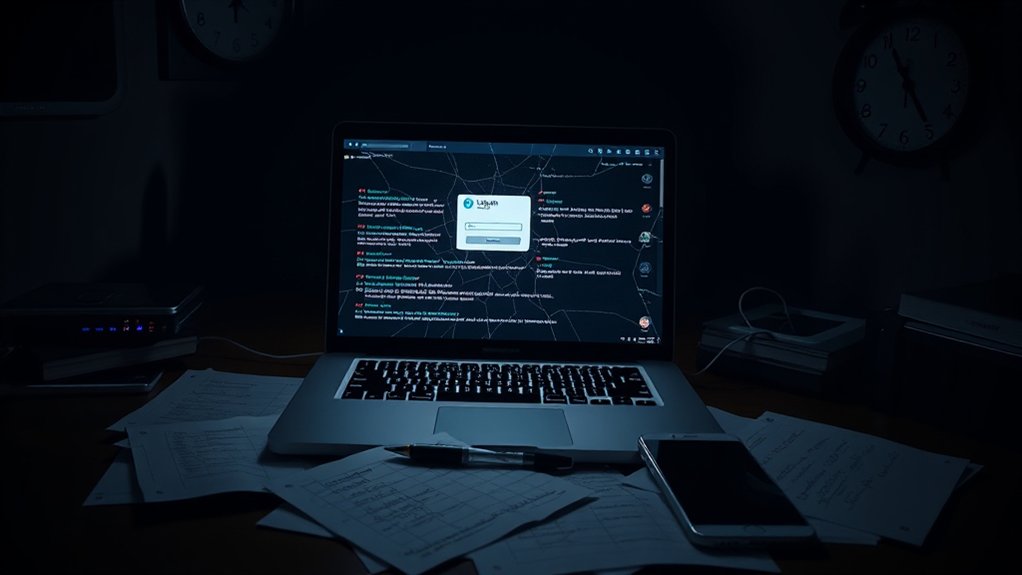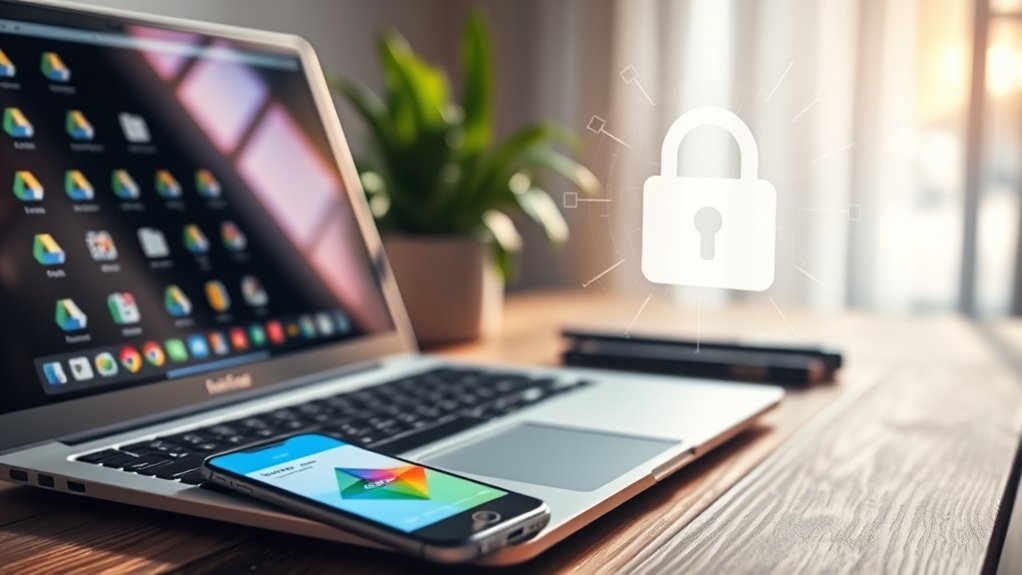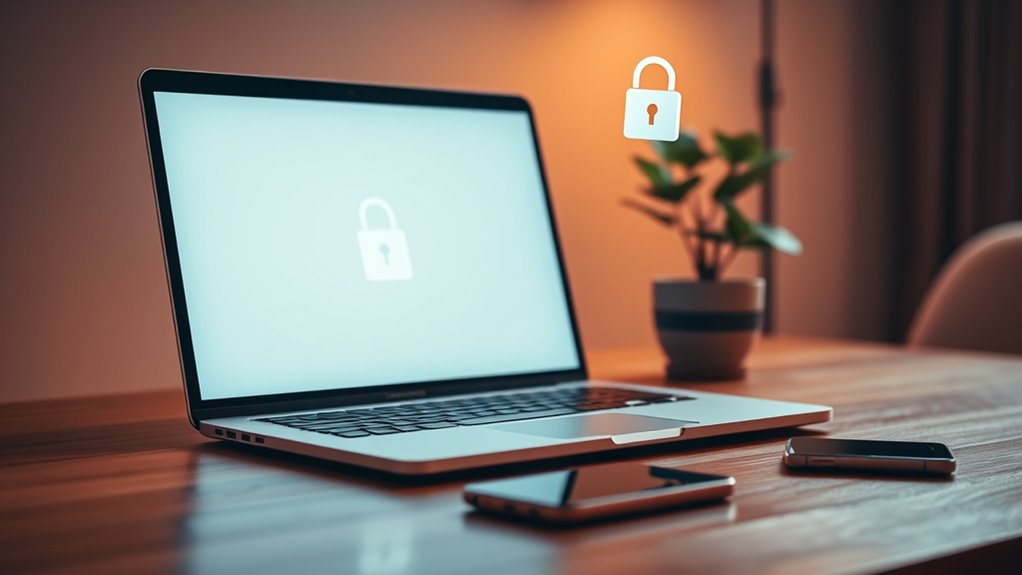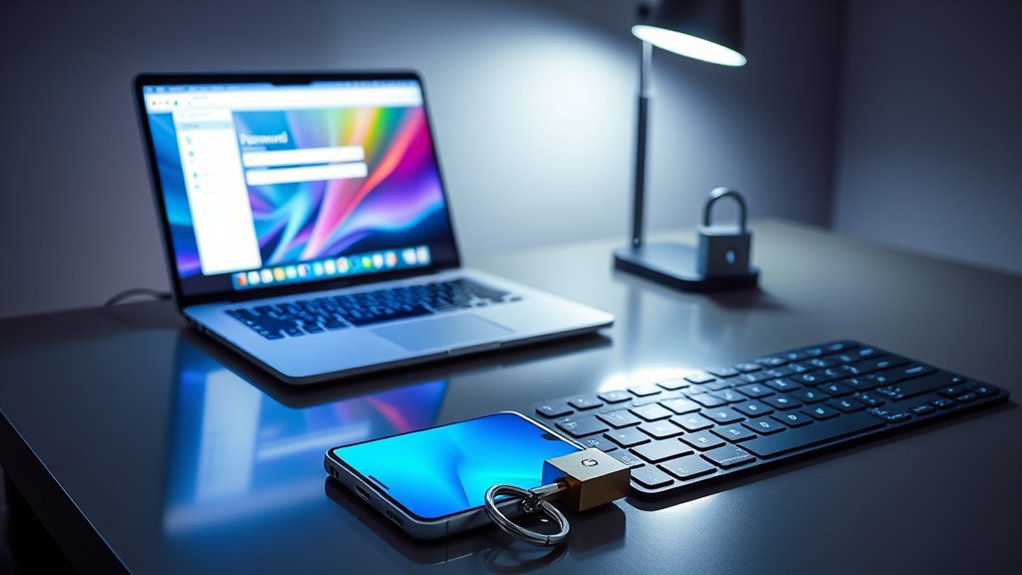Signs of a hacked email account include difficulties logging in, unexpected password resets, and unauthorized access notifications. Users should monitor account activity for unfamiliar login attempts and changes in email behavior, such as unknown messages in sent folders or unrecognized replies. Furthermore, issues with two-factor authentication may indicate compromised security. Experts recommend regularly verifying recovery information to bolster protection against identity theft and financial fraud. Further exploration reveals further critical signs and preventive measures.

How can individuals recognize whether their email accounts have fallen victim to hacking? The signs are often subtle yet alarming. A fundamental indicator is the inability to log in. If a user finds that their password no longer works, it may suggest unauthorized access, potentially leaving them locked out of their own account. Moreover, a user may receive notifications about password resets they did not initiate, indicating that someone else has taken control.
Inability to log in or unexpected password reset notifications may signal unauthorized access to your email account.
Monitoring account activity is essential. Organizations recommend regularly checking login history for unfamiliar devices or locations. Alerts regarding unusual login attempts can serve as early warnings. If notifications about unfamiliar access locations arise, immediate action should be taken, especially if the email service provider issues security alerts regarding suspicious activity. Additionally, weak passwords can significantly increase the likelihood of unauthorized access.
Changes in email activity can also confirm concerns. Users should be vigilant for unknown emails in their sent folders, as these can point to unauthorized messaging. Likewise, the absence of expected emails may indicate that someone has deleted important messages, whereas unexpected replies to previously unsent emails could suggest a breach. Moreover, if contacts report receiving spam from a trusted account, it raises significant alarm. It’s also important to verify recovery information to ensure that no unauthorized recovery methods are set, further securing the account.
Two-factor authentication (2FA) offers an added layer of security, requiring a secondary verification method. If users experience 2FA failures or related notifications, it may indicate that a hacker is attempting to navigate around security measures. Another red flag is the presence of unfamiliar email forwarding settings, which may hint at a compromised account that is routing correspondence elsewhere.
Finally, the potential consequences of a hacked email account are severe, including financial fraud and identity theft. Each incident can lead to data breaches that expose sensitive information, resulting in both reputational damage and financial loss.
The time-consuming process of recovering a hacked account can leave individuals vulnerable, underscoring the importance of vigilance and proactive security measures in protecting their online identities.
Frequently Asked Questions
How Can I Protect My Email From Being Hacked?
To protect email from potential hacking, individuals must implement several key security measures.
Utilizing strong, unique passwords that combine letters, numbers, and special characters is crucial. Additionally, enabling two-factor authentication provides an additional security layer.
Regularly updating antivirus software, applications, and operating systems further minimizes vulnerabilities. Remaining vigilant about phishing attempts and employing spam filters can greatly reduce risks, safeguarding personal information and securing one’s digital correspondence from unauthorized access.
What Steps Should I Take if I Suspect a Hack?
Upon suspecting a hack, individuals should take immediate action to mitigate potential damage. Experts recommend conducting an extensive antivirus scan and reviewing account settings for unauthorized changes.
It is additionally advisable to inspect sent and deleted folders for suspicious activity. Following this, changing passwords to unique, complex phrases and enabling two-factor authentication improves security.
Finally, notifying contacts and email providers guarantees awareness, thereby minimizing risks associated with potential phishing attempts.
Are Certain Email Providers More Secure Than Others?
Certain email providers are certainly more secure than others, employing various advanced security features.
For instance, ProtonMail utilizes end-to-end encryption and is protected by Switzerland’s stringent privacy laws. Tuta Mail incorporates post-quantum cryptography to safeguard against future threats.
Moreover, providers like Countermail exemplify rigorous encryption policies. Such features contribute to improved data privacy, ensuring minimal data collection and no third-party access, thereby providing users with a superior level of security in their communications.
Can Hacked Emails Be Recovered?
Hacked emails can potentially be recovered, even though success often depends on the specific circumstances of the breach.
Experts advise acting swiftly, as prompt recovery efforts improve the likelihood of salvaging access.
Many email providers, such as Google and Microsoft, offer recovery tools and processes tailored for compromised accounts.
Security protocols highlight the importance of verifying identity through recovery methods, which can include secondary email addresses and security questions, thereby increasing the chance of successful restoration.
What Should I Do About Suspicious Login Alerts?
Upon receiving suspicious login alerts, individuals should quickly assess their account activity. Email providers like Gmail or Outlook allow users to review recent logins, including timestamps and device types.
Experts recommend resetting passwords immediately and activating two-factor authentication for improved security. Regularly updating account recovery information is crucial to safeguard against unauthorized access.
In addition, individuals are advised to monitor activity logs routinely, ensuring swift identification of potential security breaches.









